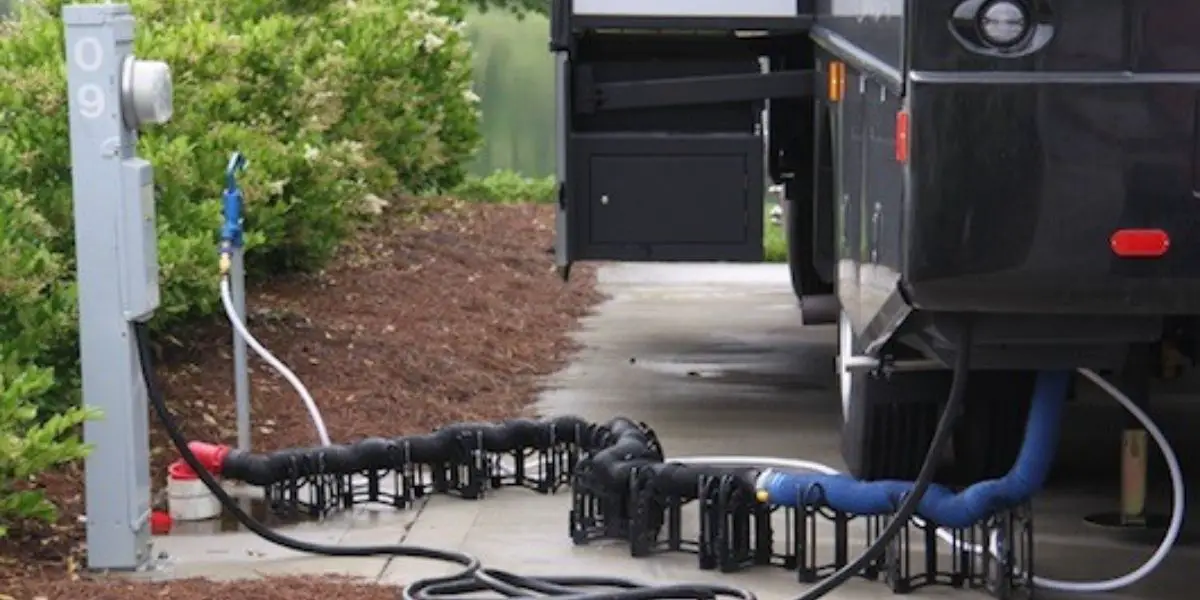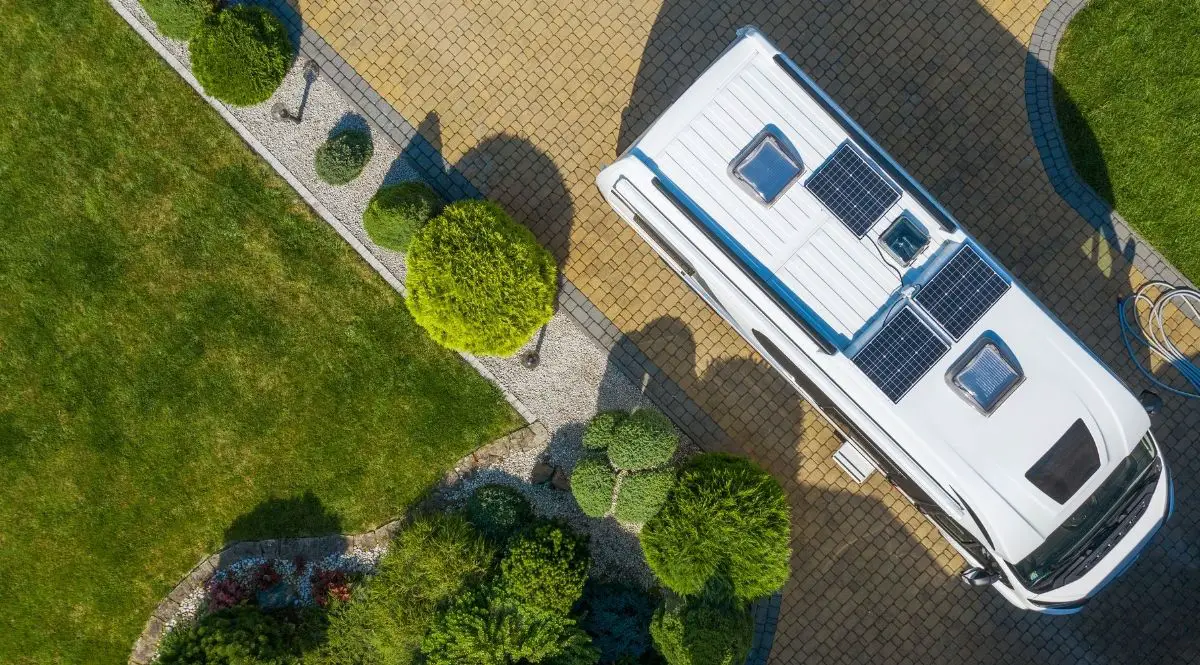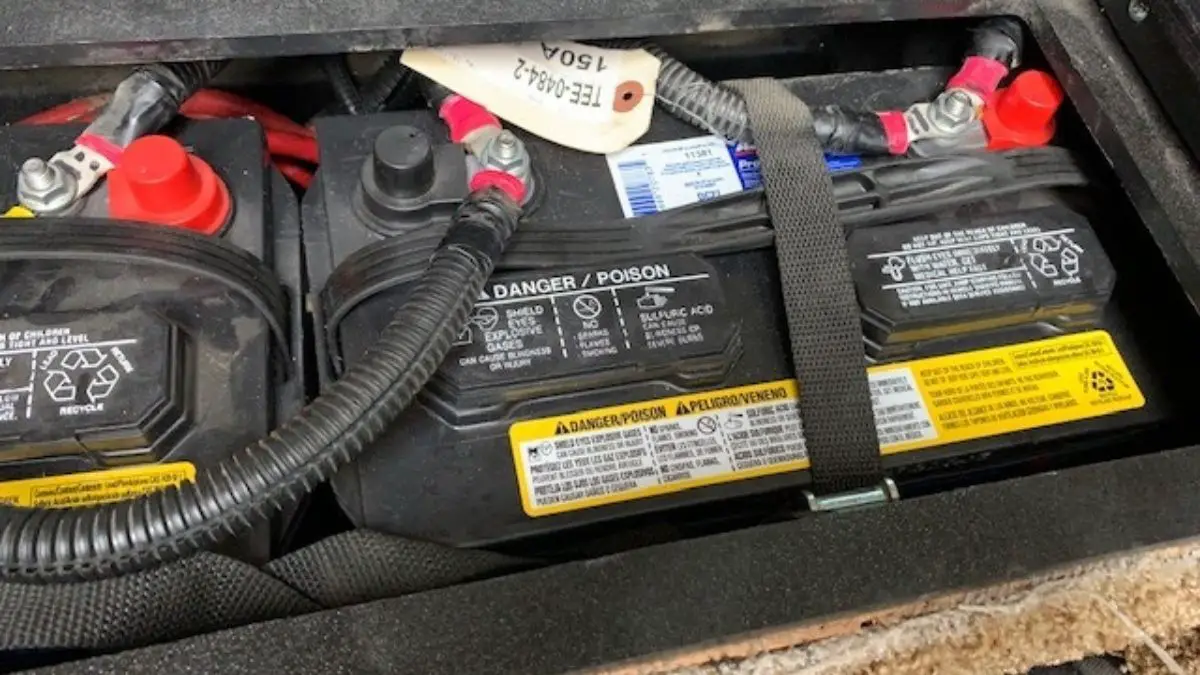When you’re driving, you might want to use the electrical outlets in your RV, such as for entertaining passengers or running an electrical device. Your electrical outlets will work in your motorhome even while driving if you have an inverter for your coach batteries or a separate generator. An electrical inverter will take the 12-volt DC (“direct current”) power from your batteries and convert it into the 120-volt AC (“alternating current”) power for your electrical outlets. If you have a generator in your RV, this can also power your outlets, even while in motion.
However, there are some limitations; for example, certain outlets in the RV may be designed to automatically shut off while the engine is running. This is usually due to laws aiming to prevent the driver from being able to watch TV or otherwise be distracted while on the road.
So, we can see it’s definitely possible to use electrical outlets on the road. But how do inverters and generators work? Is one option better than the other? And are there any limitations to using your electrical outlets in your motorhome while driving?
How Do You Power Electrical Outlets In A Motorhome While Driving?
The most common way to power your electrical outlets while on the road is via the use of an inverter. When your motorhome’s motor is running, the alternator generates DC power that goes through an isolator, then to the coach batteries. This inverter takes power from your cabin batteries 12 volt DC and converts it to a form of electricity that your outlets can use. More specifically, it puts out 120-volt alternating current (the voltage used by electronics in North America) just like the electrical outlets in your home.
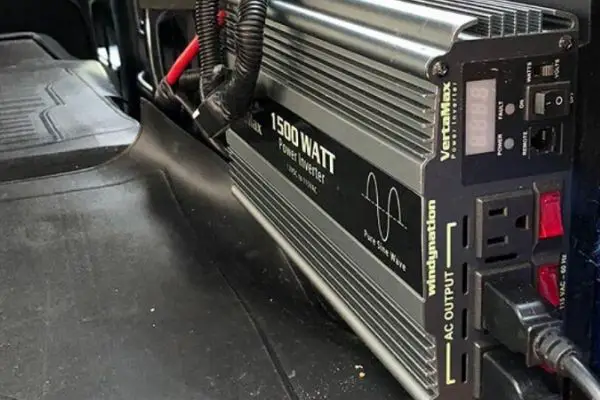
That’s the short version, but what happens “under the hood” of an inverter goes a lot more in-depth than that. If you want to learn more about all the fascinating nitty-gritty of how inverters work, check out our guide on motorhome inverters.
Most motorhomes come standard with an inverter pre-installed. If you need to install, replace, or upgrade an inverter, it can be purchased from retailers like Amazon or Camping World. While shopping for inverters, you may notice a range of wattages, and wonder which is best for you.
That wattage will determine what you can power off the inverter. To explain it simply, appliances and electronics will consume a certain number of watts, while your inverter will have a maximum number of watts it provides. So, say you have a microwave that consumes 800 watts and a TV that consumes 200 watts; in this case, you’ll need at least a 1000 watt inverter.
Another thing to keep in mind is the difference between a “pure sine wave” inverter and a “modified sine wave” inverter. A modified sine wave inverter will be cheaper, however, it can damage sensitive electronics. If you want to run things like microwaves, refrigerators, or newer TVs (or any device which is sensitive to modified sine waves), you’ll want to spend the extra money for a pure sine wave inverter.
If you want more info on wattages and what you can power with an inverter, check out our article on how RV electrical systems work.
Can A Generator Power Your Electrical Outlets In Your Motorhome While Driving?
Another option for powering the electrical outlets in your motorhome while driving is using a generator. Similar to an inverter, a generator is usually pre-installed in newer motorhomes. Built-in generators draw their fuel from your propane or utilize the gasoline or diesel from the tank.
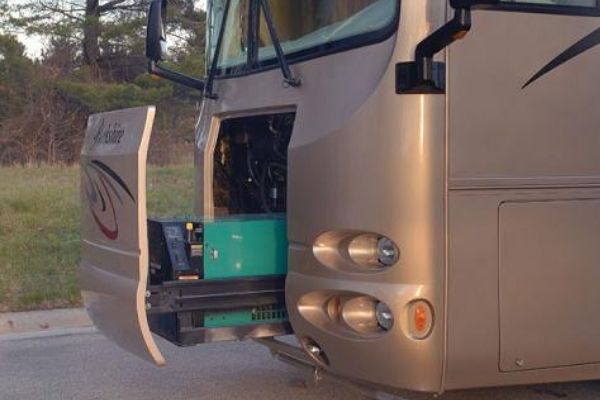
An on-board generator can be switched on from inside the cab, often with a simple switch on the dashboard. The generator will then provide a 120-volt current to your outlets and will provide a ton of power, often 3,000 watts or more.
One major downside to generators is also one of their big upsides: because they utilize the same fuel as your vehicle, they can increase your fuel consumption and cause your tank to get low much faster than normal.
One final thing to note about generators is that you should NEVER use a portable generator inside your RV. While your built-in generator is designed to vent its fumes out of the vehicle, a portable generator running inside your RV will fill the vehicle with dangerous fumes.
If you want to use a portable generator, you’ll have to use it outside the RV, and only when parked. A big reason you’d want to do that is when “boondocking,” which essentially means staying off the grid with no connections to water or power. If you’re interested in a generator for boondocking, check out our guide on what you need to know when buying a generator for your RV.
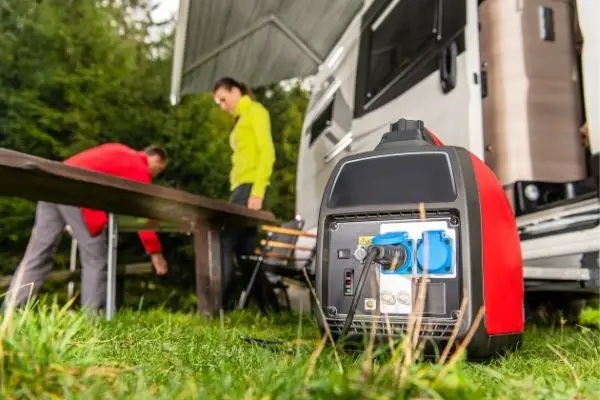
Can You Watch TV In Your Motorhome While Driving?
One big reason you may want to power your electrical outlets is to watch TV. This can help keep passengers entertained on long road trips.
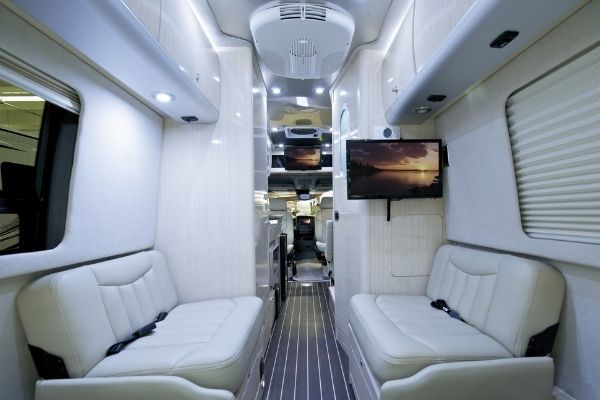
However, there is one major thing that may prevent you from watching TV in your motorhome while driving. Because of laws designed to make things safer on the road, it’s illegal in most places for the driver to be able to watch TV while driving. What that means is that, if a TV is mounted within the view of the driver, the outlet that powers it will be designed to automatically shut off when the car is in motion.
If you want to enjoy satellite TV while traveling, you’ll need a self-tracking satellite antenna. These devices automatically adjust the satellite connection while you are traveling down the road; otherwise, you won’t be able to maintain a good connection.
Another possibility is playing video games on your TV while driving. Make sure to check the wattage requirements of your console to be sure you have sufficient power to run it. For example, a Playstation 5 draws 350 watts.
How Much Electricity Do RVs Use?
You might be wondering; how much electricity does my RV use? To figure this out, you’ll have to do a little bit of math, as the consumption is based on which appliances you’ll want to be able to use.
With a bit of luck, your appliances will all list their required wattages somewhere on the appliance or device itself. For example, a microwave will often display its wattage on the inside of the door. If not, however, there is a simple mathematical formula to find it.
Watts is simply the amperage of a device multiplied by its voltage. Don’t worry, you don’t actually have to know what “amps” or “volts” are. Instead, you can find these numbers on an item’s “UL” label.
UL stands for Underwriter’s Laboratories. This is a group that does safety testing on electrical devices to make sure they’re safe for sale. There are other companies that do this (they’re known as Nationally Recognized Testing Laboratories, and are recognized by OSHA), but Underwriter’s Laboratories is the biggest in North America.
This might all be news to you, but UL labels are something you’ve probably seen many times in your life. If you look at any electrical device or appliance (or sometimes its power source), you’ll find a label with all manner of symbols and writing on it, frequently including a big “CE” that means the product can be sold in the European Union. That’s the UL label!
Usually, this label will list both the amps and the voltage of the device. The amperage will be a number followed by a capital “A”, while the voltage will be a number followed by a capital “V”. Simply multiply your amps by your volts and bam! You have your wattage.
Once you have the wattage of each individual device and appliance, you’ll want to add them all up. That’s the number of watts you’ll be using. So, if you have a fridge using 500 watts, a TV using 200, a coffee maker using 750, and a laptop charging at 30 watts, you’ll be drawing a grand total of 1480 watts.


